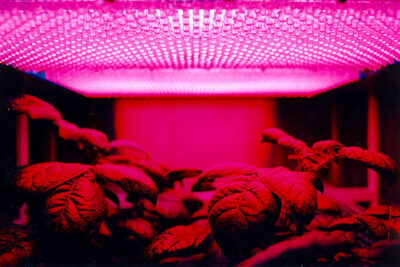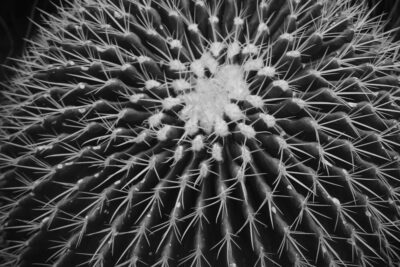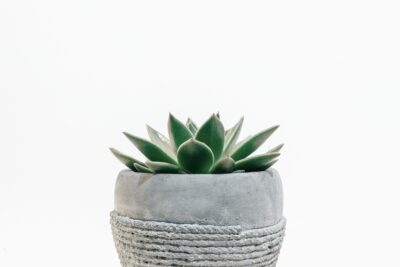
Sunlight Needs of Succulent Plants: Finding the Perfect Balance

Succulent plants are known for their ability to store water in their leaves, stems, and roots, making them highly adapted to arid and dry environments. These plants have gained popularity among gardening enthusiasts due to their unique and striking appearance, as well as their low maintenance requirements. However, despite their resilience, succulent plants still require proper sunlight to thrive and grow.
We will explore the sunlight needs of succulent plants and discuss how to find the perfect balance for their growth. We will delve into the different types of succulents and their specific light requirements, as well as the potential risks of underexposure or overexposure to sunlight. Additionally, we will provide practical tips and guidelines for determining the ideal amount of sunlight for your succulent plants, taking into consideration factors such as location, season, and indoor vs. outdoor cultivation. Whether you are a beginner succulent enthusiast or an experienced gardener looking to enhance your plant care skills, this article will provide valuable insights to help you create an optimal environment for your succulent collection.
- Determine the specific sunlight needs of your succulent plants
- Place succulents in a location that receives bright, indirect sunlight
- Monitor the amount of sunlight your succulents receive each day
- Adjust the position of your succulents to ensure they receive the right amount of sunlight
- Use shade cloth or sheer curtains to filter intense sunlight
- Provide additional artificial lighting for succulents in low light conditions
- Rotate your succulents regularly to promote even growth
- Be cautious of overexposing succulents to direct sunlight, as it can lead to sunburn
- Pay attention to the signs of light stress or lack of sunlight in your succulents
- Experiment and observe the response of your succulents to different light conditions
- Frequently Asked Questions
Determine the specific sunlight needs of your succulent plants
When it comes to caring for succulent plants, one of the most important factors to consider is their sunlight requirements. While succulents are known for their ability to tolerate harsh conditions, it's crucial to find the perfect balance of sunlight to ensure their optimal growth and health.
Here are some key points to help you determine the specific sunlight needs of your succulent plants:
1. Assess the natural habitat of your succulents
Before you can determine the ideal sunlight conditions for your succulents, it's essential to understand their natural habitat. Succulents originate from various regions around the world, and each species has adapted to specific environmental conditions, including sunlight intensity and duration.
Research the native habitat of your succulent species to gain insights into the sunlight conditions they prefer. For example, desert-dwelling succulents like cacti thrive in full sun exposure, while other varieties may prefer partial shade or indirect sunlight.
 Can Peat Moss Be Beneficial as a Soil Amendment for Succulents?
Can Peat Moss Be Beneficial as a Soil Amendment for Succulents?2. Observe your succulents' response to sunlight
Direct observation is an effective way to gauge how your succulents are responding to sunlight. Assess the foliage color, texture, and overall appearance of your plants. Signs of excessive sunlight exposure include yellowing or bleaching of leaves and a withered or shriveled appearance.
On the other hand, if your succulents are not getting enough sunlight, they may exhibit elongated stems, stretched growth, or pale green leaves. These are indications that your plants need more light.
3. Experiment with different light exposures
Based on your initial observations and knowledge of their natural habitat, you can experiment with different light exposures to find the perfect balance for your succulents. Start by gradually exposing them to more sunlight or moving them to a brighter location if they lack sufficient light.
Monitor their response over time, making adjustments as needed. Keep in mind that it's always better to provide slightly less sunlight than to risk scorching or damaging your plants with excessive exposure.
4. Consider the season and location
The intensity and duration of sunlight vary depending on the season and geographical location. It's crucial to consider these factors when determining the sunlight needs of your succulents.
During the summer months, when the sun's rays are stronger, you may need to provide more shade or protection for your succulents. In contrast, during winter or in regions with limited sunlight, you might need to supplement their light requirements with artificial lighting.
5. Use shading techniques
If you find that your succulents are receiving too much direct sunlight, you can employ shading techniques to protect them. Use sheer curtains, shade cloths, or place them under the shade of larger plants or structures to diffuse the sunlight.
 Can Succulents Thrive Outdoors in Any Climate and Season?
Can Succulents Thrive Outdoors in Any Climate and Season?Alternatively, if your succulents require more sunlight, consider placing them near windows or using grow lights to supplement their light intake.
Remember, every succulent is unique, and their sunlight needs may vary. By understanding their natural habitat, observing their response to light, experimenting, and considering external factors, you can find the perfect balance of sunlight for your succulent plants.
Place succulents in a location that receives bright, indirect sunlight
When it comes to the sunlight needs of succulent plants, finding the perfect balance is crucial for their health and overall growth. Succulents are known for their ability to store water in their leaves, stems, and roots, making them well-adapted to arid environments. However, this doesn't mean they can thrive in direct, scorching sunlight all day long.
Succulents prefer bright, indirect sunlight, which mimics the natural conditions they would encounter in their native habitats. Placing them near a south or east-facing window is usually ideal, as these orientations tend to provide the right amount of light without exposing the plants to intense, direct rays that can cause sunburn or leaf damage.
It's important to note that not all succulent species have the same sunlight requirements. Some varieties, like Echeverias and Haworthias, can tolerate more shade and prefer indirect sunlight for the majority of the day. On the other hand, sun-loving succulents such as Sedums and Agaves may require a bit more direct sunlight to maintain their vibrant colors and compact growth.
Signs of Too Much Sunlight
While succulents can handle more sunlight than most houseplants, it's still crucial to monitor their exposure to prevent potential damage. Here are some signs that your succulents may be receiving too much sunlight:
- Leaves turning yellow or white
- Leaves becoming soft and mushy
- Brown spots or patches on the leaves
- Stunted or stretched growth
- Leaf burn or scorch marks
If you notice any of these signs, it's best to move your succulents to a spot with less direct sunlight or provide them with some shade during the hottest parts of the day. This will help prevent further damage and allow the plants to recover.
 Unraveling the Secrets of Succulents: Thriving in Diverse Environments
Unraveling the Secrets of Succulents: Thriving in Diverse EnvironmentsSigns of Too Little Sunlight
On the other hand, if your succulents aren't receiving enough sunlight, they may show the following symptoms:
- Leggy or elongated growth
- Leaves stretching towards the light
- Dull or faded coloration
- Poor flowering or lack of growth
If you notice these signs, it's a good idea to move your succulents to a brighter location or provide them with additional artificial light sources, such as grow lights, to supplement their sunlight needs.
Remember, finding the perfect balance of sunlight for your succulents is key to their overall well-being. By understanding their specific needs and monitoring their response to light, you can create an optimal environment that promotes healthy growth and vibrant colors.
Monitor the amount of sunlight your succulents receive each day
When it comes to caring for your succulent plants, one crucial factor to consider is the amount of sunlight they receive. While succulents are known for their ability to thrive in arid conditions, it is important to strike the right balance when it comes to providing them with sunlight.
Proper monitoring of sunlight exposure will help you ensure that your succulents grow healthy and strong. Here are a few tips to help you find the perfect balance:
1. Understand the sunlight requirements of different succulent species
Not all succulents have the same sunlight needs. Some succulents, such as Echeverias and Haworthias, prefer bright but indirect light, while others, like Agaves and Sedums, can tolerate full sun. Research the specific sunlight requirements of the succulent species you are growing to ensure you provide them with the right amount of light.
 The Ultimate Guide: Maximum Size of Indoor and Outdoor Succulents
The Ultimate Guide: Maximum Size of Indoor and Outdoor Succulents2. Observe and adjust based on the intensity of sunlight
Each location and season may vary in terms of sunlight intensity. Observe how the sunlight falls on your succulents throughout the day and make adjustments accordingly. If you notice signs of sunburn, such as brown spots or wilting leaves, it may indicate that your succulents are receiving too much direct sunlight. On the other hand, if your succulents appear stretched or pale, it may indicate insufficient light.
3. Gradually acclimate succulents to increased sunlight
If you plan to move your succulents from a shaded area to a spot with more sunlight, it is essential to acclimate them gradually. Sudden exposure to intense sunlight can shock the plants and lead to sunburn. Start by exposing them to a few hours of direct sunlight per day, then gradually increase the duration over a week or two.
4. Provide shade during the hottest part of the day
In regions with scorching temperatures, it is beneficial to provide shade for your succulents during the hottest part of the day. This can be achieved by placing them under a shade cloth or moving them to a spot with filtered light. This practice will protect them from excessive heat and prevent sunburn.
5. Rotate your succulents regularly
Rotating your succulents regularly is a simple yet effective way to ensure even sunlight exposure. By rotating them every few weeks, you can ensure that all sides of the plant receive adequate light, promoting balanced growth and preventing the plant from leaning towards the light source.
Remember, finding the perfect balance of sunlight for your succulents is crucial for their overall health and well-being. By monitoring their sunlight exposure, understanding their specific needs, and making necessary adjustments, you can help your succulents thrive and flourish.
Adjust the position of your succulents to ensure they receive the right amount of sunlight
When it comes to cultivating healthy succulent plants, finding the perfect balance of sunlight is crucial. Succulents, known for their ability to retain water in their leaves and stems, have unique sunlight requirements that differ from other types of plants.
 Are my succulents stretching under my grow light? How to prevent it
Are my succulents stretching under my grow light? How to prevent itIt is essential to adjust the position of your succulents to ensure they receive the right amount of sunlight. While these plants thrive in bright light, excessive exposure to intense sunlight can lead to sunburn and damage their delicate tissues. On the other hand, insufficient sunlight can cause them to become etiolated, meaning they grow weak and elongated.
Determining the optimal sunlight needs for your succulents
To find the perfect balance, consider the following factors:
- Succulent species: Different succulent species have varying sunlight needs. Some prefer full sun, while others thrive in partial shade. Research the specific requirements of your succulents to understand their sunlight preferences.
- Location: The amount of sunlight your succulents receive may vary depending on where you live. Take note of the climate and the intensity of sunlight in your area to make appropriate adjustments.
- Season: Sunlight intensity differs throughout the year. During summer, the sun is more intense, while winter sunlight may be milder. Adjust the position of your succulents accordingly as the seasons change.
By considering these factors, you can determine the ideal sunlight needs for your succulent plants and create the perfect environment for their growth.
Use shade cloth or sheer curtains to filter intense sunlight
When it comes to succulent plants, finding the perfect balance of sunlight is crucial for their growth and overall health. While these plants are known for their ability to thrive in dry and arid conditions, they still require adequate sunlight to photosynthesize and maintain their vibrant colors.
However, intense and direct sunlight can be harmful to succulents, especially during the peak hours of the day. To protect your succulents from the scorching heat and potential sunburn, consider using shade cloth or sheer curtains to filter the sunlight.
Shade cloth is a lightweight fabric that can be draped over your succulent plants or attached to a frame to create a shaded area. It comes in various levels of shading, allowing you to choose the appropriate one based on the specific needs of your succulents. By reducing the intensity of the sunlight, shade cloth helps to prevent sunburn and excessive drying of the plant's leaves.
Similarly, sheer curtains can be hung in front of windows or placed around your succulent garden to diffuse the sunlight. This creates a softer and more indirect light, which is ideal for succulents that prefer a slightly shaded environment.
 How Resilient Are Succulents to Temperature Fluctuations?
How Resilient Are Succulents to Temperature Fluctuations?It is essential to strike a balance between providing enough sunlight for your succulents' growth and protecting them from the damaging effects of intense sunlight. By using shade cloth or sheer curtains, you can create a controlled environment that mimics their natural habitat and ensures their well-being.
Provide additional artificial lighting for succulents in low light conditions
Succulent plants are known for their ability to thrive in dry and arid environments, but they still require a certain amount of sunlight to grow and stay healthy. While most succulents prefer bright, indirect sunlight, there are some varieties that can tolerate low light conditions.
However, if you find that your succulents are not receiving enough natural sunlight, it is important to supplement their lighting needs with artificial sources. This is especially crucial during the winter months when the days are shorter and natural sunlight may be limited.
When providing additional artificial lighting for your succulents, there are a few key factors to consider:
1. Choose the right type of artificial lighting
Not all artificial lighting is created equal. When it comes to succulents, the best options are fluorescent lights or LED grow lights. These types of lights emit the right spectrum of light that succulents need for photosynthesis and growth.
Fluorescent lights are more affordable and widely available, making them a popular choice for indoor gardening. They come in different sizes and are relatively energy-efficient. LED grow lights, on the other hand, are more expensive upfront but have a longer lifespan and consume less energy in the long run.
 The Science Behind Succulents Turning Red in Specific Conditions
The Science Behind Succulents Turning Red in Specific Conditions2. Determine the right intensity and duration of light
Unlike some other plants, succulents do not require intense or prolonged exposure to artificial light. As a general rule, they need about 12-16 hours of light each day. However, the intensity of the light should be moderate, not too bright or too dim.
It is important to strike a balance and avoid overexposing your succulents to artificial light, as this can lead to sunburn or other damage. Experiment with different light intensities and durations to find the optimal conditions for your specific succulent varieties.
3. Position the lights at the right distance
The distance between the artificial lights and your succulents is crucial for their growth and well-being. If the lights are too far away, they may not provide enough light for photosynthesis. On the other hand, if they are too close, they can cause heat stress or burn the leaves of your succulents.
Aim to position the lights about 6-12 inches above your succulents, depending on the intensity of the light. Monitor your plants closely and make adjustments if you notice any signs of stress or damage.
By providing additional artificial lighting for your succulents in low light conditions, you can ensure that they receive the right amount of light to thrive and maintain their vibrant colors. Remember to choose the right type of lighting, determine the appropriate intensity and duration, and position the lights at the correct distance to create the perfect balance for your succulent plants.
Rotate your succulents regularly to promote even growth
Succulent plants are known for their ability to thrive in harsh, arid conditions. With their thick, fleshy leaves and stems, they have adapted to store water and survive in environments with limited rainfall. However, even these resilient plants require proper sunlight exposure to maintain their health and aesthetics.
 Factors Affecting Succulent Size: Growth Potential & Limitations
Factors Affecting Succulent Size: Growth Potential & LimitationsOne important practice to ensure the optimal growth of your succulents is regular rotation. By rotating your succulent plants, you can promote even growth and prevent them from leaning or reaching towards the light source.
Why is rotation necessary? Succulents have a natural tendency to grow towards the direction of the sun. If they are left in the same position for an extended period, they may start to stretch and lean towards the light source. This uneven growth not only affects the plant's appearance but may also lead to weak stems and an increased risk of damage.
By rotating your succulents, you can encourage them to grow evenly on all sides. This will result in a more symmetrical and aesthetically pleasing plant. Additionally, rotating your succulents will ensure that all parts of the plant receive an equal amount of sunlight, preventing any one side from becoming excessively shaded.
Here are some tips for properly rotating your succulents:
- Choose the right time: Rotate your succulents once every few weeks or whenever you notice uneven growth.
- Keep track of the direction: Before rotating, take note of which side of the plant is facing the light source.
- Gently rotate: Carefully turn your succulent in the opposite direction, ensuring that all sides are exposed to sunlight.
- Observe the plant's response: After rotation, monitor the plant's growth and adjust the frequency of rotation if necessary.
Remember, each succulent species has its own sunlight requirements. While most succulents thrive in bright, indirect light, some may prefer more shade or direct sunlight. It is essential to research the specific needs of your succulent species to determine the ideal sunlight exposure.
Proper sunlight exposure is crucial for the overall health and beauty of your succulent plants. By regularly rotating them, you can ensure that they receive adequate light on all sides, promoting even growth and a vibrant appearance.
Be cautious of overexposing succulents to direct sunlight, as it can lead to sunburn
 Succulents: Full Sun or Shade for Optimal Growth?
Succulents: Full Sun or Shade for Optimal Growth?When it comes to caring for succulent plants, finding the perfect balance of sunlight is crucial. While these desert plants thrive in bright and sunny conditions, it's important to be cautious of overexposing them to direct sunlight, as it can lead to sunburn.
Succulents have adapted to survive in arid climates by storing water in their leaves, stems, or roots. This enables them to withstand long periods of drought. However, too much sunlight can cause the plant to lose more moisture than it can retain, resulting in sunburned or dehydrated leaves.
To ensure the optimal growth and health of your succulent, it's essential to understand its sunlight needs. Most succulents require at least 4-6 hours of direct sunlight per day. However, this can vary depending on the specific species and the climate in which they are grown.
Signs of Overexposure to Sunlight
It's important to be able to recognize the signs of overexposure to sunlight in your succulent plants. Some common indicators include:
- Discoloration: Sunburned leaves may turn yellow, brown, or even white. This discoloration is often accompanied by a soft, mushy texture.
- Wrinkling and Shrinking: Overexposure to sunlight can cause the leaves to shrivel and wrinkle. The plant may also appear smaller in size.
- Blisters or Lesions: Sunburned succulents may develop blisters or lesions on their leaves, which can lead to further damage or infection if not addressed.
If you notice any of these signs, it's crucial to take immediate action to protect your succulent. Move it to a location with filtered or indirect sunlight, such as a shaded area or near a window with a sheer curtain. This will help prevent further damage and allow the plant to recover.
Remember, finding the perfect balance of sunlight for your succulent plants is a delicate process. It's always better to provide them with slightly less sunlight than they need rather than risking overexposure. By observing the signs and adjusting their environment accordingly, you can keep your succulents healthy and thriving.
Pay attention to the signs of light stress or lack of sunlight in your succulents
 Succulents: Perennials or One-Season Wonders? Unveiling their Lifespan
Succulents: Perennials or One-Season Wonders? Unveiling their LifespanSucculent plants, with their unique ability to store water in their leaves and stems, are known for their ability to thrive in arid conditions. However, even these hardy plants have specific sunlight needs that must be met in order for them to flourish.
One of the most important factors to consider when caring for succulents is the amount of sunlight they receive. While these plants love bright light, too much direct sunlight can actually be harmful to them. On the other hand, insufficient sunlight can lead to weak growth and poor overall health.
So how do you find the perfect balance of sunlight for your succulents? It all starts with paying attention to the signs of light stress or lack of sunlight in your plants. Here are some indicators to look out for:
1. Stretching or etiolation
One common sign of insufficient sunlight is when your succulents start to stretch or become leggy. This elongation of the stems is known as etiolation. Succulents stretch towards the light source in an attempt to maximize their sun exposure. However, this growth pattern can lead to weak and unstable plants.
2. Pale or discolored leaves
If your succulents are not getting enough sunlight, their leaves may start to appear pale or discolored. This is because chlorophyll, the pigment responsible for the plant's green color, requires sunlight to be produced. Without enough light, the leaves may lose their vibrant hues and turn yellow or even white in extreme cases.
3. Leaf drop or wilting
Insufficient sunlight can also cause your succulents to drop their leaves or show signs of wilting. Without adequate light, the plant's ability to photosynthesize and produce energy is compromised. As a result, the leaves may start to wither and eventually fall off.
Pro tip: If you notice any of these signs, it's time to reassess the lighting conditions for your succulents and make adjustments accordingly.
On the other hand, if your succulents are exposed to too much direct sunlight, they may exhibit signs of light stress. These signs include:
1. Red or purple discoloration
When succulents are exposed to excessive sunlight, they may develop red or purple discoloration on their leaves. This is a protective mechanism that helps to shield the plant's cells from the harmful effects of intense light.
2. Sunburn
Yes, succulents can get sunburned too! If your plants are exposed to intense sunlight for prolonged periods, their leaves may develop brown or yellow patches. This damage is irreversible and can impact the overall health of your succulents.
3. Scorch marks
Another sign of light stress in succulents is the presence of scorch marks on the leaves. These marks occur when the intense heat from the sun causes the plant's cells to become damaged and die off.
Remember: It's important to find the perfect balance of sunlight for your succulents by providing them with enough light without subjecting them to excessive or insufficient amounts. Observing the signs of light stress or lack of sunlight in your plants will help you determine if any adjustments need to be made to their lighting conditions.
Experiment and observe the response of your succulents to different light conditions
When it comes to caring for succulent plants, one of the most important factors to consider is the amount of sunlight they receive. While succulents are known for their ability to thrive in arid conditions, it's crucial to find the perfect balance of sunlight to ensure their optimal growth and health.
Every succulent species has its own unique light requirements. Some varieties, such as Echeverias and Haworthias, prefer bright indirect light, while others, like Sedums and Agaves, can tolerate direct sunlight. Understanding the specific needs of your succulents will help you provide the ideal light conditions for them.
Factors to Consider
When experimenting with different light conditions for your succulents, consider the following factors:
- Intensity: The intensity of sunlight can vary depending on the time of day and the season. It's important to determine whether your succulents thrive in bright, indirect light or if they can handle the stronger, direct sunlight.
- Duration: While succulents generally require at least 6 hours of sunlight per day, excessive exposure to the sun can lead to sunburn and damage. Monitoring the duration of sunlight your plants receive will help you find the right balance.
- Orientation: Consider the direction your succulents face in relation to the sun. Some species may prefer east-facing windows where they receive morning sun, while others thrive in west or south-facing windows that provide more intense sunlight in the afternoon.
Monitoring and Adjusting
Once you have determined the initial light conditions for your succulents, it's crucial to monitor their response and make adjustments as needed. Keep a close eye on the following signs:
- Stretching: If your succulents start to stretch or become elongated, it's a sign that they are not receiving enough light. Consider moving them to a brighter location.
- Browning or Yellowing: On the other hand, if you notice browning or yellowing leaves, it may indicate that your succulents are receiving too much direct sunlight. Adjust their position to provide more shade or filtered light.
- Color Intensity: Succulents typically exhibit vibrant colors when they receive the right amount of light. If your plants appear pale or dull, they may need more sunlight.
- Growth Rate: Pay attention to the growth rate of your succulents. If they are growing too slowly, it could be a sign that they need more light. Conversely, rapid growth may indicate that they are receiving too much light.
Remember, finding the perfect balance of sunlight for your succulents may require some trial and error. By closely observing their response to different light conditions and making necessary adjustments, you can ensure that your succulents thrive and flourish.
Frequently Asked Questions
1. How much sunlight do succulent plants need?
Succulent plants generally thrive in bright, indirect sunlight for about 6-8 hours a day.
2. Can succulent plants withstand direct sunlight?
While some succulents can tolerate direct sunlight, it is best to provide them with filtered or partial shade to prevent sunburn and damage to their leaves.
3. What happens if succulents don't get enough sunlight?
If succulents don't receive enough sunlight, they may become leggy, lose their vibrant colors, and have weakened growth. They may also be more prone to pests and diseases.
4. How do I find the perfect balance of sunlight for my succulents?
It's important to observe your succulents closely and adjust their sunlight exposure accordingly. Start with bright, indirect sunlight and monitor their growth and condition. If they stretch or become pale, they may need more light. If their leaves turn brown or develop sunburn spots, they may require less light.
If you want to read more articles similar to Sunlight Needs of Succulent Plants: Finding the Perfect Balance, you can visit the Growing Conditions category.






You Must Read